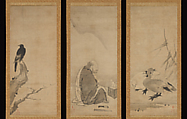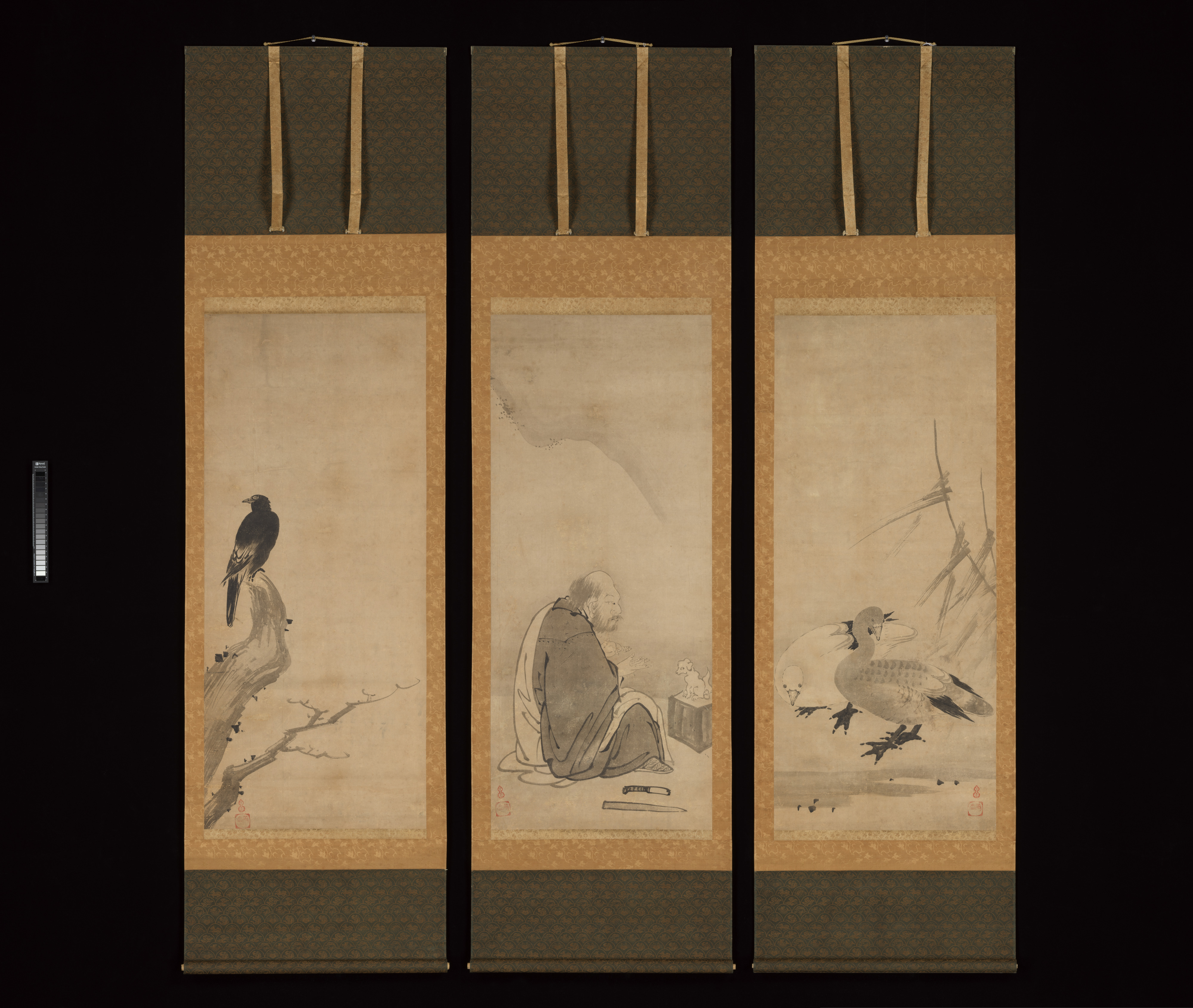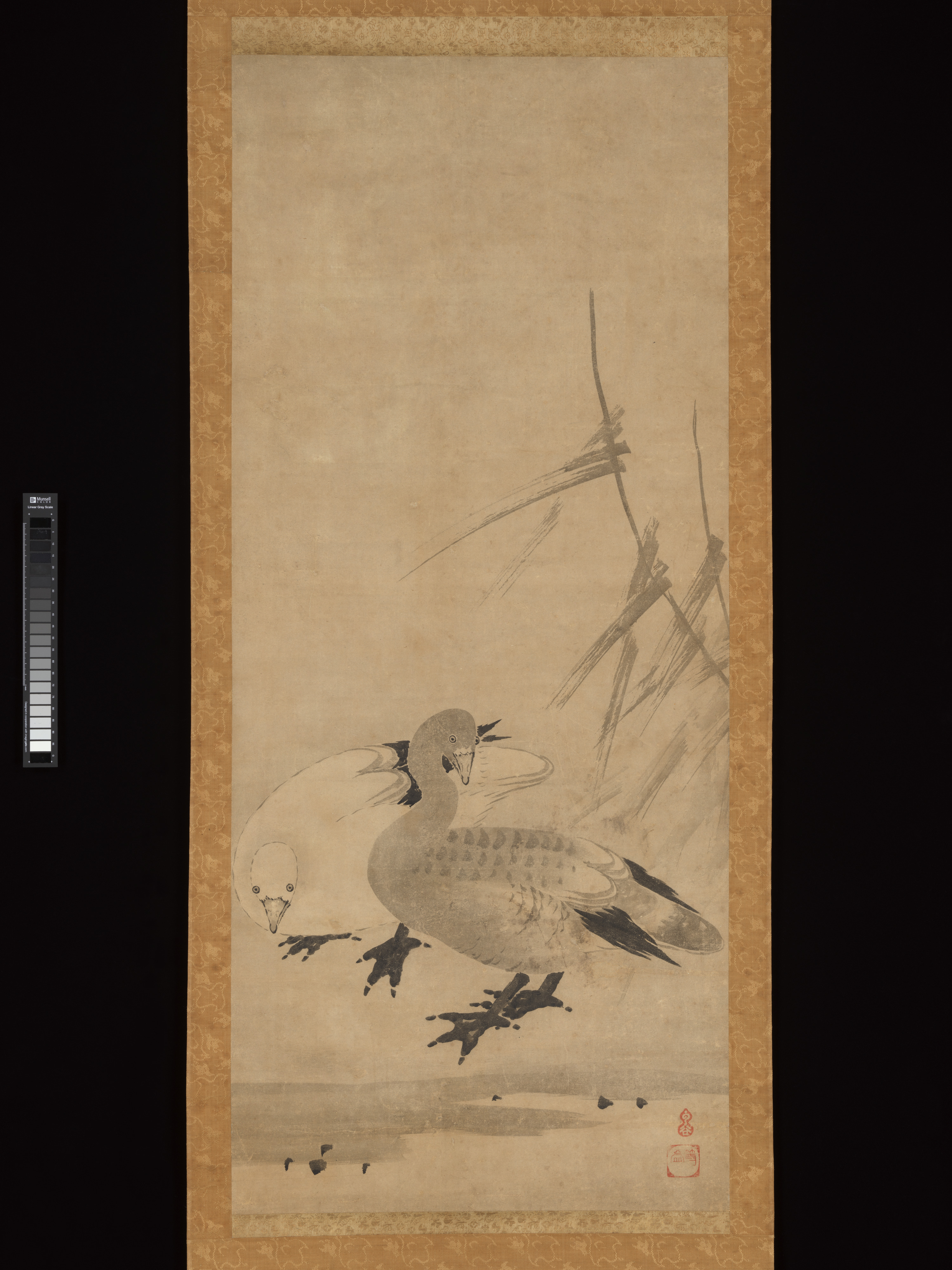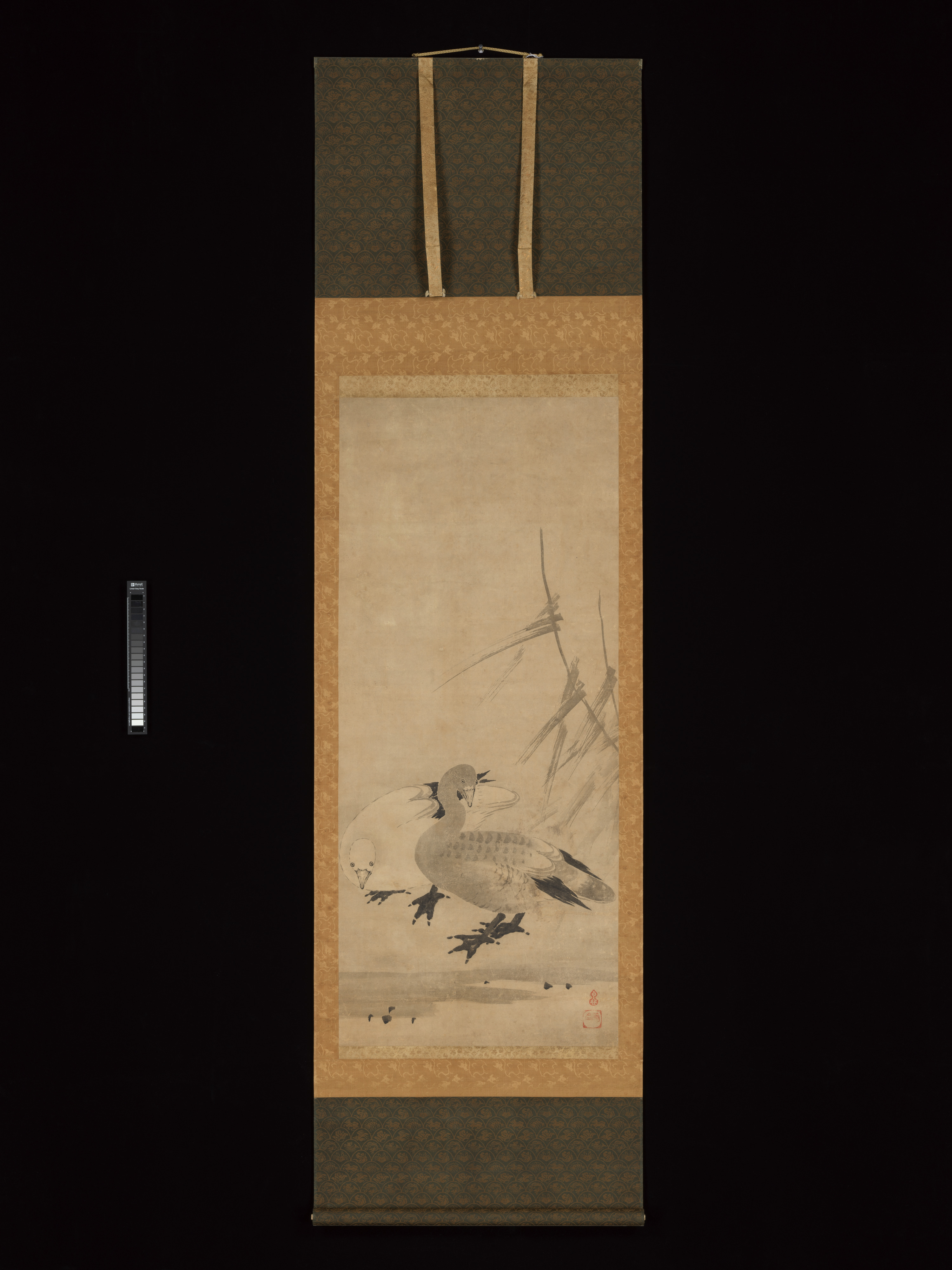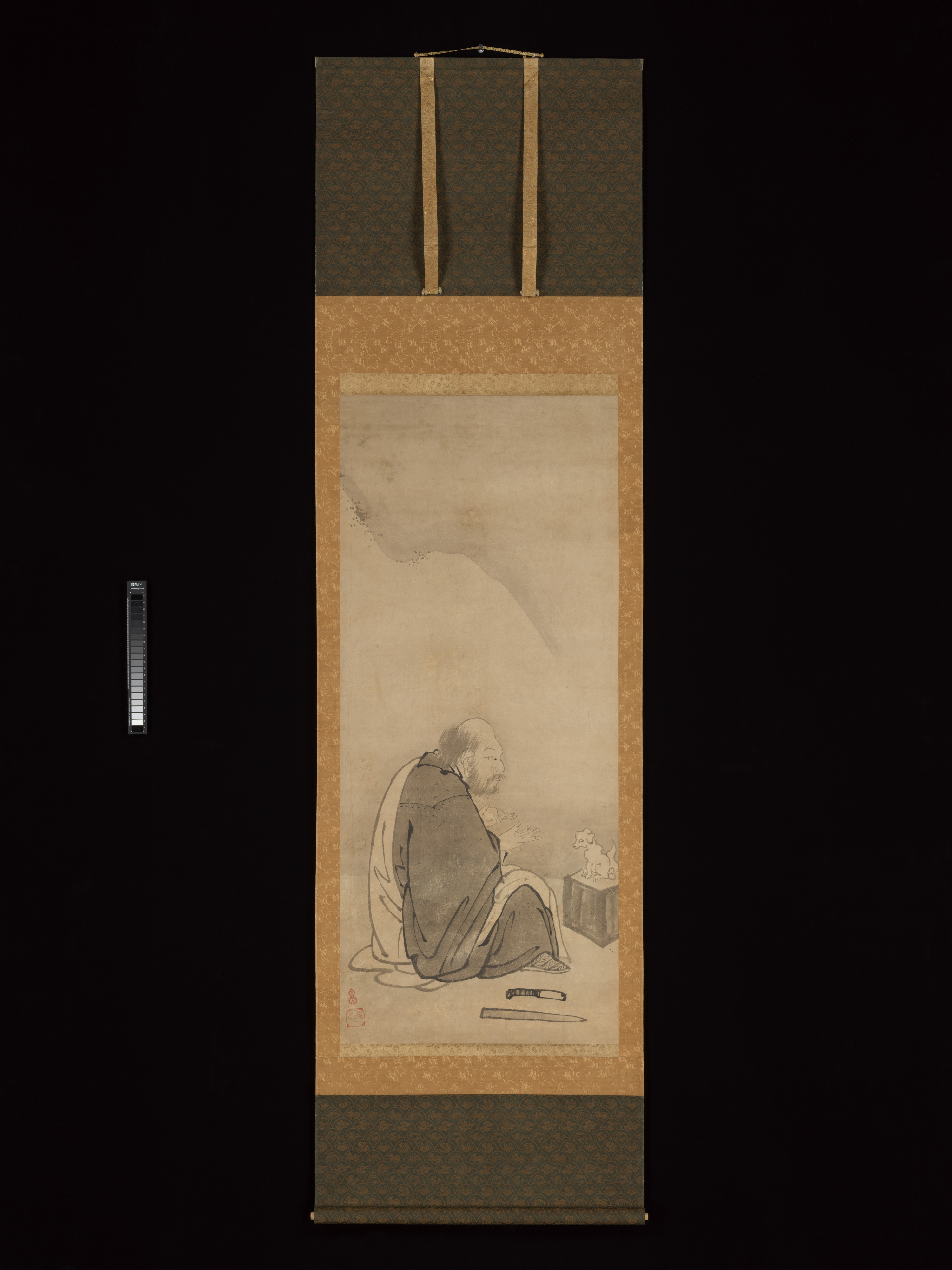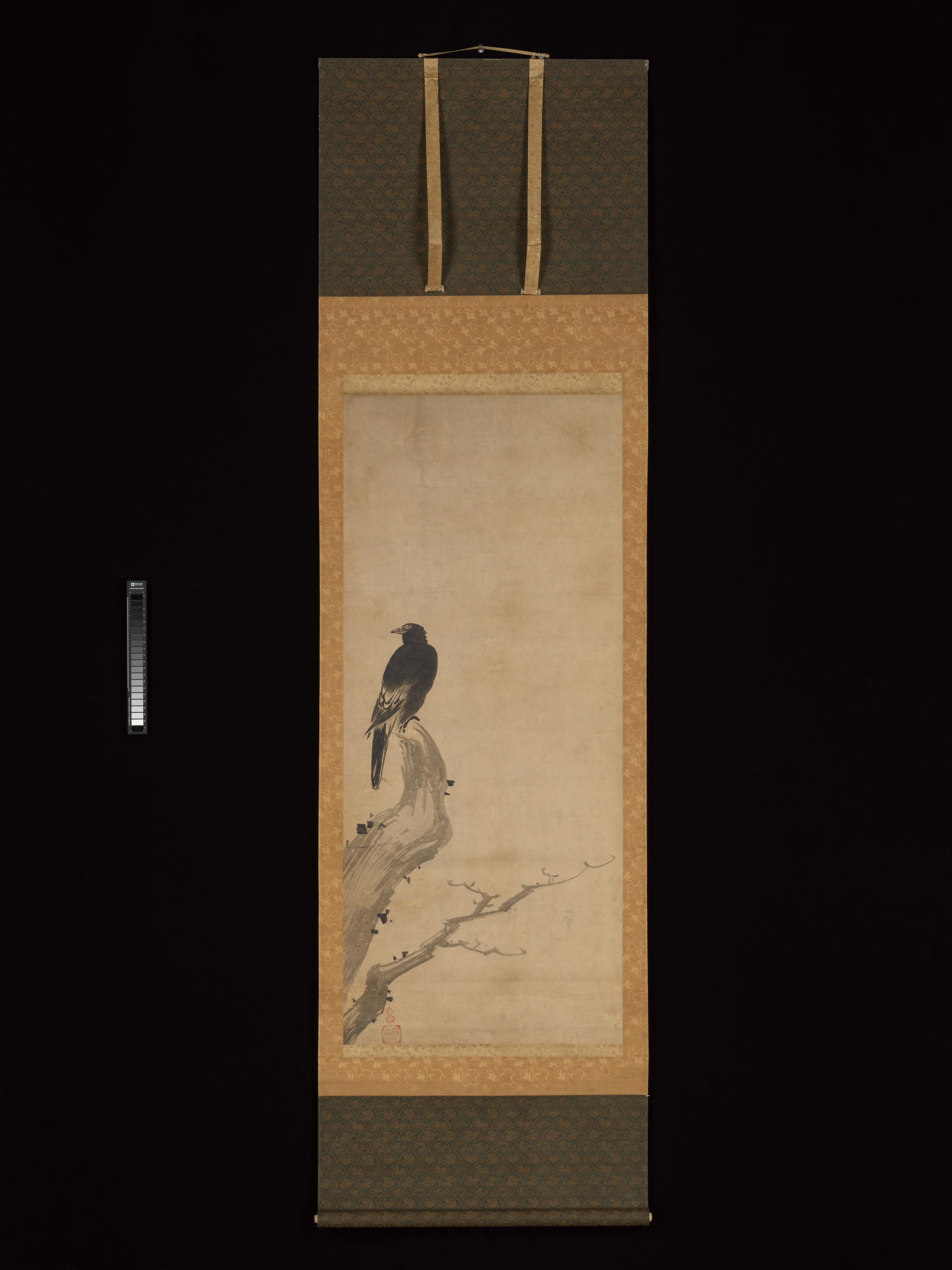Monk Zhaozhou and Dog, with Geese and Mynah
Unkoku Tōeki Japanese
Not on view
This work combines three seemingly unrelated subjects in a single, multi-scroll composition, a format common in early Zen devotional painting and adopted widely during the sixteenth century. The central scroll illustrates the Chan monk Zhaozhou Congshen (Jōshū Jūshin, 778–897), perhaps best remembered for his response to the koan “Does a dog have a Buddha nature?” He replied simply, “Wu,” meaning on one level “no.” In a Zen mindset, however, this may have been a short verbal signal to stop the logical process of trying to find an answer. Zhaozhou is flanked by so-called bird-and-flower subjects, originating in China—two geese and autumnal reeds at right, and a mynah atop a tree stump at left. The artist Tōeki belonged to the Unkoku school, painters-in-attendance to the powerful Mōri clan.
This image cannot be enlarged, viewed at full screen, or downloaded.
This artwork is meant to be viewed from right to left. Scroll left to view more.
